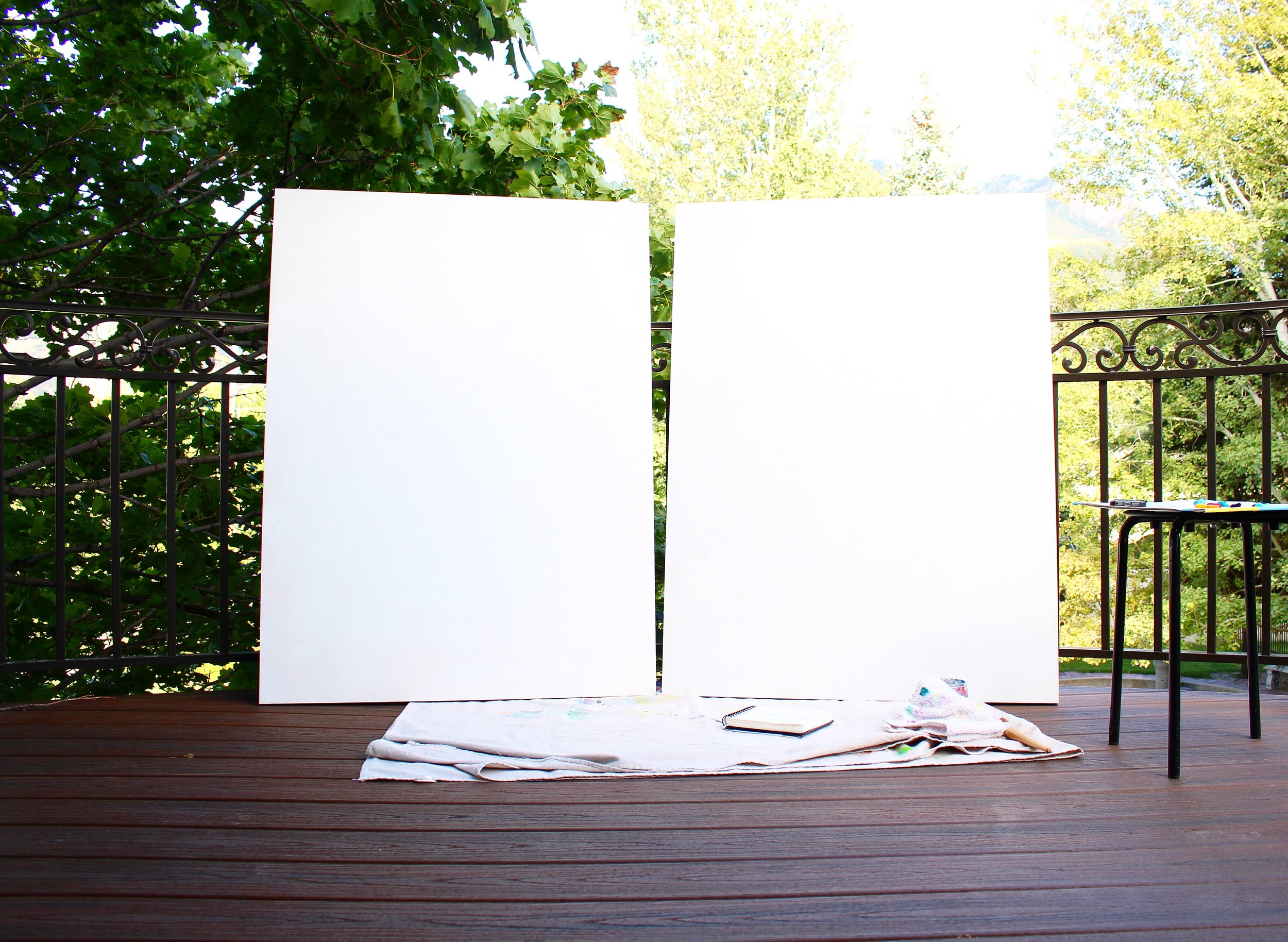Studio Things
"You have to participate relentlessly in the manifestations of your own blessings."
-Elizabeth Gilbert
Artist Tip:
I rarely use black paint. I find it to be a very dull color. Instead, I mix my black with various colors on my palette. This makes for a far more diverse and saturated black depending on the hues that you choose. This helps it to jump off the surface rather than sinking into the background.
Process
1. This is awesome.
2. This is hard.
3. This is terrible.
4. I am terrible.
5. Wait, this might be okay.
6. I can do this.
7. This is awesome.
The Artist's thought-process right there, my own included. Although, I am not one to force creativity. If a painting is not manifesting itself in a pleasing way, I tend to let it go. Maybe try another time if I feel so impressed. So I usually have a few unfinished pieces lying around. I just end up painting new paintings over them.
But more specifically, I paint portraits. For the most part, I am not able to pull them from my own imagination so first things first: finding a reference. I often pull from old candid photos or friends or family. But sometimes a photoshoot is necessary to get what I need. That is where my love for photography comes into my studio life.
Once I have my references to work from, what I need is a few straight hours of uninterrupted solitude. I usually start by mapping out my painting with acrylic paint, laying down general shapes and sizes. Then I'll draw specifics with washable marker. From then on, it's back and forth between marker and paint until I am at peace with me work. That's the goal.
I finish my paintings by hiding my symbol in the painting and signing the back; I don't like signing on the front of my paintings. I think a signature can be more distracting than cohesive.
Lastly, a coat of protective glossy primer and FINI!
Materials
I work mainly on wood rather then on canvas. I don't like the flexibility or texture of canvas. I prefer a smooth surface. What I call a "wood panel" is a sheet of thin wood with a built in frame on the back. This allows for the ability to hang without framing with a clean painted edge. It is certainly a real money saver if you don't care to frame your work. I purchase my wood panels from Hobby Lobby or Blick Art Supplies in Sugarhouse. You can buy them untouched or pre-primed with gesso.
Masonite is my other favorite medium to paint on. It is very thin and cheap and can be cut into any size I need. I usually purchase it at Lowes and have it cut on the spot for me; careful though to ensure that the wood is being cut exactly to the standard sizes - just a fraction of a centimeter too big and it won't fit into a frame off the shelve. I often purchase a 4x8 ft sheet for $10 and cut it into five to twenty panels. Before masonite is ready to paint, however, it must be gessoed.
Gesso is a special primer that allows the paint to stick to the material without sinking into the wood. It's also important on masonite because it creates an opaque white coverage on a rather dark brown surface, allowing for the paint to show at its most vibrant.
Speaking of paint, I use mainly Master's Touch acrylic paint or Liquitex Heavy Duty acrylic paint. I have found this paint to be high quality while not breaking the bank account (usually). The most important quality to look for in acrylic paint is its transparency. A low quality paint might be very watered down and see-through when applied. This is very important because acrylic paint process is about layers. (This also attributes to its forgiving nature.) This is especially important when it comes to white paint. White paint is a staple color in my acrylic paint palette, so I will usually get a larger tube of Master's Touch or Liquitex Basics which is a bit cheaper but can go a long way.
Lastly, I humor my innerchild and use Crayola washable markers. Because they are washable I can do just that: wipe it away if I don't like my stroke or even move it around with a dab of water, creating a consistency similar to watercolors.
Works of art don't just come on canvas...
Artist Tip:
Never put your drink next to your paint water. Disaster can strike in so many ways.





